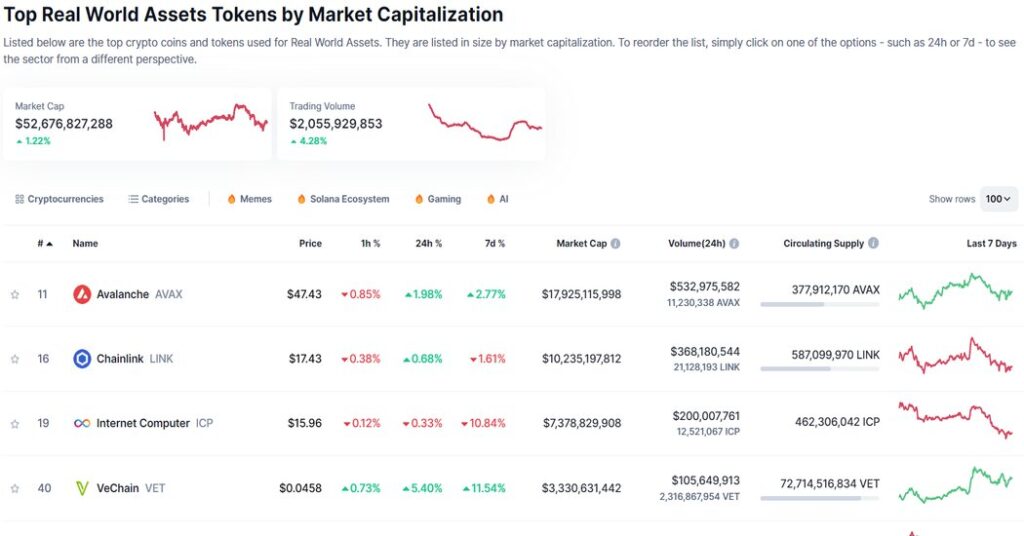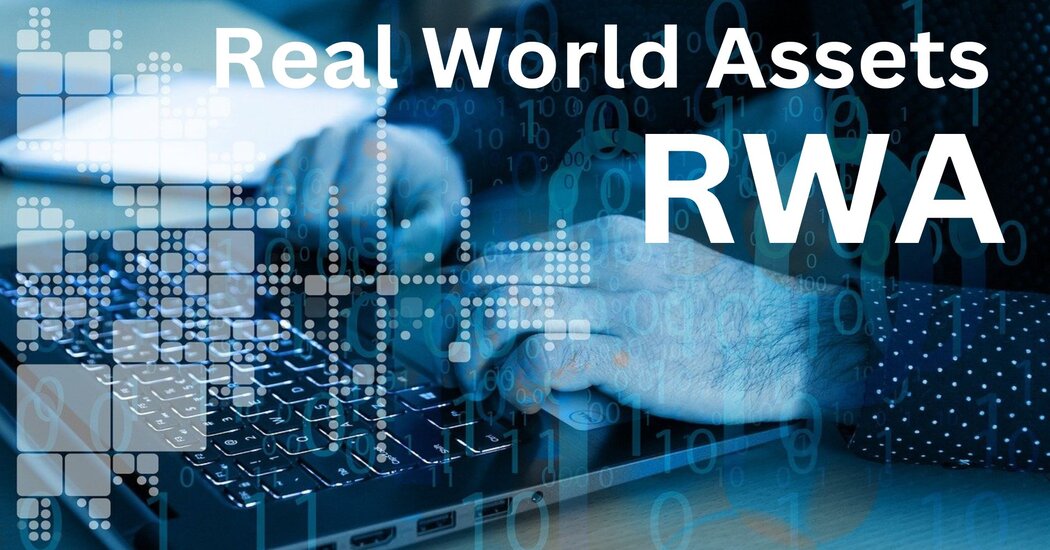The realm of Decentralized Finance (DeFi) continues to evolve, and one of the hottest areas of exploration is the tokenization of real-world assets (RWAs). By leveraging blockchain technology, RWAs offer a glimpse into a future where traditional assets like real estate, commodities, and even intellectual property can be fractionalized and traded with greater ease and efficiency.
Here’s a breakdown of the latest updates in the RWA space:
1. Rise of Stablecoins:
While not technically RWAs themselves, stablecoins play a crucial role in facilitating RWA tokenization. These cryptocurrencies are pegged to a real-world asset, most commonly the US dollar. CoinGecko’s 2024 RWA Report highlights that USD-backed stablecoins still dominate the space, with Tether (USDT) leading the pack. This stability creates a foundation for RWA tokens, allowing them to be valued and traded without the volatility inherent to many cryptocurrencies.

2. Increased Adoption of Security Tokens:
Security tokens represent a fractional ownership stake in a real-world asset. This opens doors for greater accessibility, allowing investors with limited resources to participate in markets previously reserved for high-net-worth individuals. For instance, a piece of commercial property can be divided into smaller tokens, enabling a wider range of investors to own a share.
3. Regulatory Hurdles Remain:
Despite the potential benefits, RWA tokenization faces regulatory challenges. Regulators are grappling with how to classify and oversee these novel financial instruments. Ensuring compliance and investor protection requires clear guidelines yet maintaining an environment that fosters innovation. Collaborative efforts between industry leaders and regulatory bodies are crucial for navigating this complex landscape.
4. Institutional Interest on the Rise:
Major financial institutions are taking notice of RWAs’ potential. BlackRock, a global investment management giant, recently outlined a vision for a $10 trillion RWA tokenized market. This increased institutional involvement suggests a growing confidence in the technology and its ability to streamline traditional financial processes.

5. Specific Asset Classes Gain Momentum:
While the RWA market is still nascent, certain asset classes are attracting particular attention.
- Tokenized Treasuries: The demand for tokenized US treasuries surged in 2023. This trend is attributed to investors seeking safe-haven assets during periods of market volatility.
- Commodity-backed Tokens: Gold remains the most popular commodity for tokenization, followed by other precious metals like silver. These tokens offer a way to participate in the commodities market without the physical storage and transportation hurdles.
- Real Estate Tokenization: The potential to fractionalize ownership of real estate is a major driver in the RWA space. Platforms are emerging that allow for investment in tokenized properties, potentially democratizing access to this traditionally illiquid asset class.
6. Innovation in Underlying Infrastructure:
The success of RWAs hinges on robust blockchain infrastructure that can handle the complexities of tokenization and trading. New protocols are being developed to address scalability, security, and regulatory compliance concerns. For example, Polymesh is a blockchain platform specifically designed to facilitate the issuance and management of security tokens.
ALSO READ THIS – Web 3.0: Diving into the Decentralized Future of the Web
Looking Ahead: The Future of RWAs
The RWA market holds immense promise for bridging the gap between traditional finance and the DeFi ecosystem. As the technology matures and regulatory frameworks evolve, we can expect to see increased adoption and diversification within the RWA landscape. Here are some potential future developments:
- Increased Liquidity: Fragmentation of traditionally illiquid assets like real estate could lead to a more liquid marketplace, benefiting both investors and asset owners.
- New Investment Opportunities: Tokenization opens doors for novel financial products and investment vehicles, catering to a wider range of risk appetites and investment goals.
- Enhanced Efficiency: Streamlined processes for asset ownership and management could lead to cost reductions and improved efficiency in the financial sector.
The potential of RWAs is undeniable, but challenges remain. Addressing regulatory uncertainties, ensuring investor protection, and developing robust infrastructure are critical steps towards realizing the full potential of this transformative technology. As these hurdles are overcome, RWAs have the potential to revolutionize the way we invest and interact with real-world assets.
What exactly is an RWA?
An RWA (Real World Asset) is any asset with value that exists in the physical world. This can include things like real estate, commodities (like gold or oil), artwork, intellectual property, and even things like high-end sneakers.
How does tokenization work with RWAs?
Tokenization is the process of creating a digital representation of a real-world asset on a blockchain. Imagine a fancy digital certificate that proves you own a piece of something. This allows the asset to be divided into smaller pieces (fractions) and traded more easily.
What are the benefits of RWA tokenization?
There are several potential benefits. Increased accessibility: Anyone with an internet connection could potentially invest in things like real estate that were previously out of reach. More liquidity: By dividing assets into smaller pieces, they become easier to buy and sell, creating a more active market. Streamlined processes: Blockchain technology can automate tasks and potentially reduce costs associated with traditional asset ownership.
What is the future of RWAs?
The future looks bright! As technology matures and regulations become clearer, RWA tokenization has the potential to revolutionize the way we invest and interact with traditional assets. It could open doors for new investment opportunities, create a more efficient financial system, and make it easier for people to invest in a wider range of assets.
